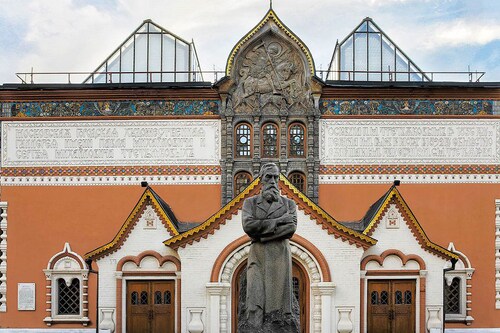How the Russian authorities have contemporary art in their sights
The Russian authorities are increasingly interfering with the programs of the country's museums and art galleries to ensure that they reflect national values


With artists in exile overseas and exhibitions closed, contemporary art has been in Moscow"s sights since Russia"s 2022 invasion of Ukraine. The Russian authorities are increasingly interfering with the programs of the country"s museums and art galleries to ensure that they reflect national values.
The State Tretyakov Gallery in Moscow is one institution that"s been on the receiving end of this pressure. Its general director, Zelfira Tregulova, recently received a letter signed by the deputy director of the Russian Ministry of Culture"s Department of Museums and Foreign Relations, Natalia Chechel, asking her to rethink some of her exhibitions, according to the Moscow Times. The reason? They are supposedly at odds with the state"s policy "to preserve and strengthen traditional Russian spiritual and moral values," in accordance with Presidential Decree 809, which took effect on November 9, 2022.
This letter follows a complaint addressed to the Ministry of Culture by a man named Sergei Shadrin. The latter reportedly felt a deep feeling of uneasiness and distress after having seen works of contemporary art on show in the Moscow gallery representing funerals or scenes of drunkenness, for example. Such creations apparently show "signs of a destructive ideology," he explained in his complaint, a copy of which was seen by the Moscow Times.
It seems that Sergei Shadrin was particularly shocked by a bronze statue of La Pietà by Alexander Burganov, dating from 1978. He sees the Russian sculptor"s decision not to include the face of the Virgin Mary as a "devilish interpretation" of religious history.
The State Tretyakov Gallery now has until February 6 to report on the compliance of the content of its exhibitions to the Russian Ministry of Culture"s Department of Museums and Foreign Relations. Russian authorities are accustomed to this kind of intimidation, according to a museum employee. "We are dealing with a typical Soviet way of dealing with objectionable art," they told the Moscow Times anonymously.
Russian artistic circles have been under intense pressure from the Kremlin to promote "neutral" art—i.e., art that is apolitical and does not offend the country"s traditionalist values—since the beginning of Russia"s full-scale invasion of Ukraine. This repression pushes many artists and curators to leave the country, while those who remain often choose to self-censor for fear of reprisals.
This phenomenon is not unique to Russia. The government of the current Polish President, Andrzej Duda is also using culture as a political weapon to serve a state-sanctioned view of Polish national identity. He uses the law on blasphemy, which is part of the Polish penal code, to prosecute dissident voices and muzzle the country"s artistic community. Some artists now limit themselves, consciously or otherwise, in their artistic practice so as not to offend religious feelings or national symbols. "I don’t know how many ideas I’ve reconsidered because I was tired and fed up and didn’t want to worry about someone showing up to my house to drag me to the prosecutor’s office," said Polish painter, Marta Frej, in a 2022 report from the Artistic Freedom Initiative.
First Published: Feb 04, 2023, 06:56
Subscribe Now